

The next Free Spirit Friday interview features Beth from Hardly A Globetrotter. I got to know Beth during my four-month stay in Spain through our Irish friends we had in common. I only realised that Beth was a fellow travel blogger about three months in, but now I love everything she writes. Every time she uploads a new blog post, I find myself being incredibly excited to read it.
Let’s kick this one off!

In a word, YES. When I first moved to Spain I didn’t speak any Spanish and I didn’t know anyone in my chosen city. I’d moved for a change of scene and to learn a new language but in a lot of ways I hadn’t really prepared myself – the culture shock was huge and it didn’t help that I was living in an area where a large percentage of the population didn’t speak English! Screwed myself a bit there, didn’t I? Ultimately it came down to putting myself out there, saying yes to everything and meeting as many people as possible while also taking the initiative to learn the basics of Spanish. One year on and I have a lot of friends here and I can (just about) speak Spanish! It was hard, but in the end it was worth it, I’ve met so many amazing people
I’ve always had friends from a variety of different age groups so for me, having a lot of friends on their Erasmus, some of whom were seven or eight years younger than me, wasn’t an issue. To be honest, without those guys I probably never would have integrated into life here! Now I have friends who are studying, friends in their mid-late 20s like me and even friends in their 40s! It’s nice to have that mix.
I wanted to leave the UK because I was getting very disillusioned with London life – I love London and I had a great (very well paid!) job, lots of friends and a nice apartment. The problem was I felt like that was sort of it and I was going to be working in my chosen industry until I got too old to do it any more. I didn’t want to ‘settle down’ per se. And although I’d travelled a lot, I had always wanted to live abroad. Staying in Europe was the best option for me because as a UK citizen I had freedom of movement. (no Brexit questions please, thinking about it still upsets me too much). I wanted to learn another language and I’ve always loved Spanish culture and the lifestyle here, plus it’s such a beautiful (and extremely useful) language.
If I could, I’d live everywhere! I spent some time in the States when I was younger and I always wanted to move there, although nowadays I don’t know how easy it would be for me. I would love to travel around South America and I think it would be nice to spend a couple of years over there, though I’m unsure as to which country.
Good question! Someone probably asks this question just about every time I go back to the UK haha. The answer for me is no. When I was in the UK I was headed towards what we would see as traditional milestones – buying a house, getting married, starting a family. In all honesty I wasn’t ready for it, I wanted to travel, to learn, to experience new things, and I knew that if I settled down, it would be much harder to do. To be honest, I don’t see myself doing it anytime soon. When I was 21, I thought by now I would have found a husband and maybe even have kids (I’m 28). Now I realise how young I still am and how much I have left to do – there’s plenty of time to do the family thing in the future, if I decide it’s right for me. But right now, I feel more fulfilled and happy than I ever felt in London, staring down the barrel of a mortgage!
JAFFA CAKES JAFFA CAKES JAFFA CAKES! I miss them so much. You can get them here but they’re not the same! Can I choose another type of food? I can? Excellent! I would also choose my mum’s homemade chocolate cake. She’s an amazing baker and I really miss her cakes.
I think Brits can learn a lot from the Spanish. I think the main takeaway we could benefit from in the UK is the more relaxed pace of life. Of course, every individual is different. But here in Spain, I just feel like nobody stresses that much about the small stuff. There’s more focus on the things that are really important – family, friends, food, having a good time, and taking life at your own pace. People work hard here but they know how to balance their lives a little better. I’ve definitely learned a lot!
I’m very lucky that I was raised by two absolute legends who always told us we could be and do anything we wanted if we worked for it. My parents were incredibly supportive of my decision. They’re both quite well-travelled people and they’re all about educating yourself, broadening your mind, etc. My mum actually did something similar when she was my age – she packed up and moved to the States. She was 27/28, single and it was the 80s so everyone thought she’d gone mental, but she didn’t care and ended up having an incredible time there, so she was especially excited for me. I know my parents miss me a lot and it must be hard for them but they’ve been nothing but supportive to me in everything I’ve done.
FOMO is definitely something you have to consider if you’re planning to move abroad. The first few months will be especially tough – I remember seeing photos on social media of my friendship group back home all together and thinking “What the eff have I done?” It’s normal. It takes time to adjust to a new culture, new lifestyle and being away from your family. Even now I get really homesick sometimes, especially when I miss big things at home. My cousin got engaged a couple of months ago and we’re really close, but I couldn’t celebrate with her. My sister bought a house with her boyfriend and I couldn’t go to visit them. One of my best friends got engaged to her girlfriend of a decade, two awesome people I’ve known since uni, and I couldn’t celebrate with them. It’s really tough sometimes and you have to anticipate that you’re going to feel isolated. Keep busy, embrace your new life and find ways to keep in touch with home which work for you. I would also say be careful not to be too dependent on those back home – it will make you feel more alienated from your new surroundings if you don’t embrace it fully.
Yes, definitely, if an opportunity presents itself! Right now I think I’d like to stay in Spain for a couple more years. But I’m looking into opportunities in other Spanish-speaking countries. We’ll see what happens! I think I’m always going to be someone who travels. I’ll be one of those crazy hippie grandmas who splits her time between two or three countries. I’ve never felt a burning need to settle in one place. I feel at home anywhere if I’m with the right people!
I don’t think there is anywhere I would rule out. Obviously some parts of the world are more dangerous or unwelcoming than others. Many of those places change with time, though. So although I’m not planning a move to North Korea anytime soon, there’s nowhere I would completely rule out in the future. You never know where you’re going to end up!
Huge thank you to Beth for letting me grill her about what it’s like to live in Spain, even though I lived there myself for four months. You can follow Hardly (a) Globetrotter on her blog, Instagram, Twitter and Mixcloud (yes, Beth is also a DJ).
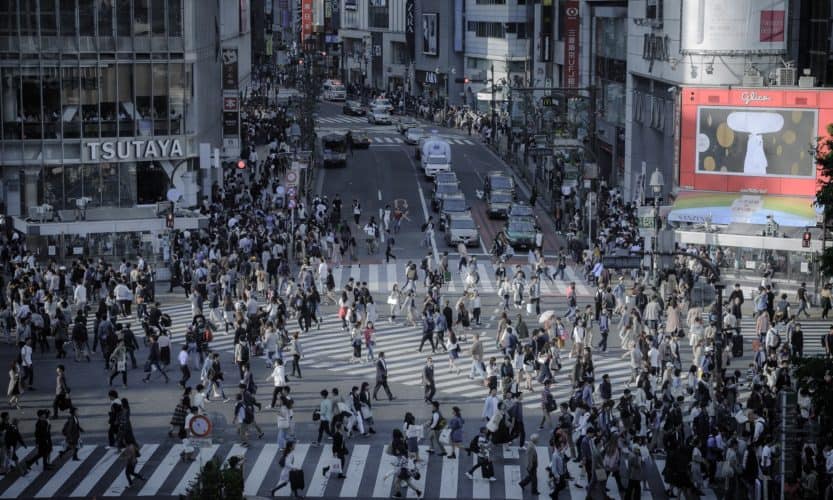
With over 38 million people calling it home, Tokyo is the most populated city on earth. Not only does that mean you could easily spend weeks there without being bored, it also means that there’s an abundance of things that travellers can (and should) do in the city. This is an overview of fifteen essential experiences for your first time in Tokyo.
I mean, the fact that you’re reading this post indicates that you don’t need any more reasons to visit Japan, right? With its cities like Osaka, Kyoto and Yokohama and its quaint villages like Shirakawa-go and Hakone, it’s easy to think that Japan should be a destination that’s a lot more popular. However, there are still some things you need to keep in mind before coming to this Asian country.
Either way, this list of essential Tokyo experiences will go a long way helping you plan your Japan itinerary. Your first visit to Japan will be overwhelming, and that’s okay. This list of things to do during your first time in Tokyo is here to help you find structure in the chaos that is the Japanese capital.
Note: I’ve said it numerous times, but you’ll want to purchase a JR Pass to help you get around Tokyo. Here’s why a JR Pass is a worthwhile investment.
Let’s do this.
Your first time in Tokyo should capture the most important things the city has to offer. This list will tell you what those things are. Check out the map embedded below to see where you can find the experiences mentioned here. (click here to reload the page if the map isn’t loading correctly)
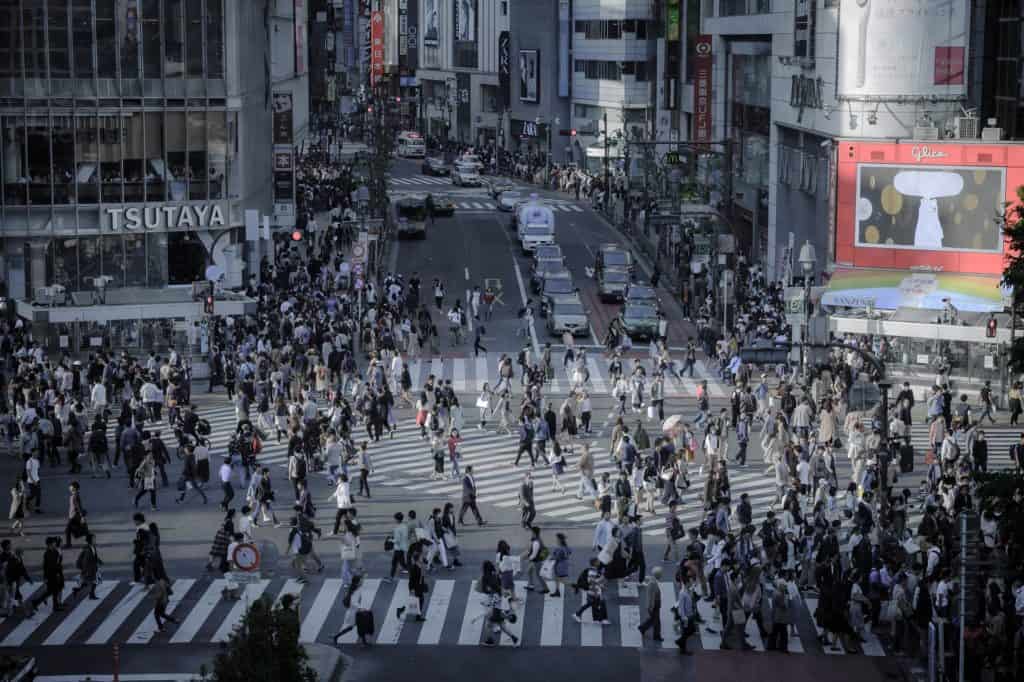
Not only is Shibuya Crossing the busiest and one of the best-known pedestrian crossings in the world, it’s also an iconic landmark in Tokyo and a symbol of modern times in Japan. Among the locals, it’s known as ‘Scramble Crossing’ because of its layout which also includes a diagonal crossing.
On your first visit to Tokyo, you could easily fill a day just wandering around Shibuya and taking in everything that the Japanese capital has to offer. Drink some coffee, listen to the sounds of the urban jungle and watch thousands of people cross the street at once.
From Tokyo Station or from Shinjuku Station: take the JR Yamanote Line to Shibuya Station. Take the Hachiko exit and you’ll have direct access to Shibuya Crossing.
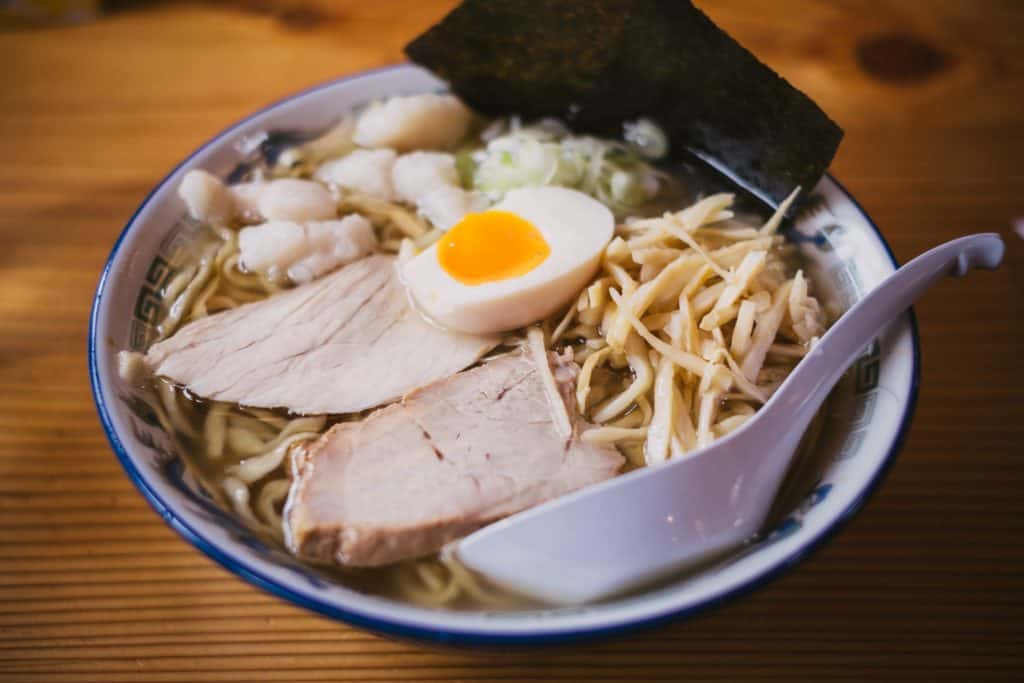
If Shibuya is Tokyo’s most technologically advanced district, Shinjuku surely is its culinary beating heart. As my family are well aware by now, I could rave about the bowl of ramen I had in Shinjuku all day. We picked a small ramen bar near one of Shinjuku’s train stations to go for lunch, and I had the best ramen of my life. Granted, I hadn’t really eaten ramen that didn’t come from a €0.50 packet of instant ramen that many times, but still.
For the real ramen experts among you: yes, I’m aware that the term ‘ramen’ encompasses many different kinds of noodle dishes in Japan. In case you’re unaware, there are several flavours, types of noodles, broths, toppings, and much more. If you’re looking for more information about varieties of ramen, there are tons of articles online.
In this district, you’ll find a broad range of places to eat ramen, from cheap noodle stands on the side of the road to high-end gastronomic restaurants. Anything ramen-related you can dream of, you’ll find it in Shinjuku.
Takeshita Street is the centre of Japanese youth culture. It’s a pedestrian shopping street that stretches 400 metres and it’s filled to the brim with kawaii boutiques, cafes, restaurants and clothing stores. It’s unlike anything you’ll ever see. Probably.
Many people believe that Takeshita Street is where kawaii culture originated. For this reason, the street is brimming with people who want to see what kawaii is all about during high season. And for this reason, I believe you should go there for your first time in Tokyo.
From Tokyo Station, Shinjuku Station or Shibuya Station, take the JR Yamanote Line to Harajuku Station. Takeshita Street starts across the road from the exit of Harajuku Station.
Okay, I know it sounds boring and it doesn’t seem like something you’d want to do on your first time in Tokyo. But hear me out.
Tokyo is home to some of the world’s biggest department stores, like Isetan, Sogo, Loft, PARCO, Tokyu and Hankyu (yes, I could go on, but I think you get the point I’m trying to make).
Whether you’re looking for a trendy new outfit, new home decor or stationery equipment for your next bullet journal adventure, you’ll find it in a department store in Japan. From tablecloths to a bottle of sunscreen, they’ll have everything you need.
Also, for those of you looking for the freshest and most delicious Japanese food that’s still relatively affordable: every department store you’ll visit has an entire floor dedicated to food. And, seeing as these buildings are massive, that’s a pretty big deal.

According to the Japan Amusement Machine and Marketing Association (yes, that’s a real thing), there are 4,856 registered arcades in all of Japan. Although there were over 40,000 in the industry’s prime time, arcade halls are still insanely popular in Japan.
In big cities like Osaka and Tokyo specifically, businessmen often spend an entire Saturday afternoon in an arcade hall trying to get the high-score on their favourite arcade machine. That’s something we can hardly even fathom, but it’s just a part of the arcade culture in Japan.
Fun fact: Japanese arcades don’t exclusively cater to teen guys and young men. They often have a whole floor (usually the top floor) dedicated to ‘purikura photo booths‘, which are mostly used by groups of teen girls who dress up and put on make-up for the perfect kawaii picture.
Visiting an arcade hall the first time you’re in Tokyo will give you a chance to dance to funky songs like nobody’s watching. You don’t have to worry about the Japanese people who are there to admire your moves, because you’ll likely never see them again in your life. This is your chance to go crazy.
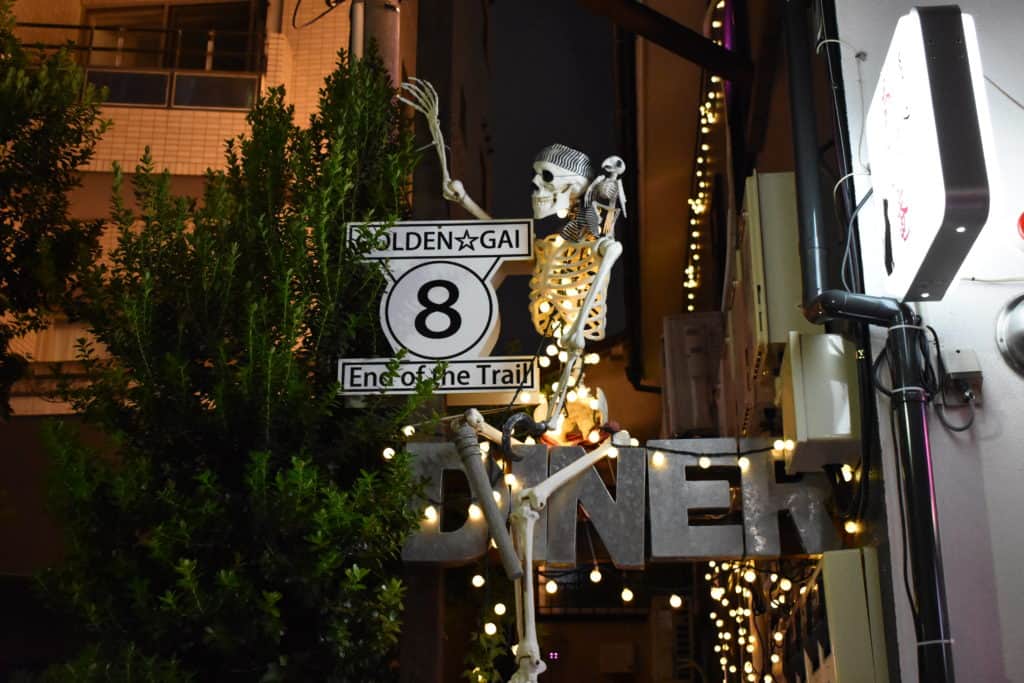
Golden Gai is a tiny area in Tokyo’s Shinjuku ward with a labyrinth of narrow alleyways that house nearly 200 tiny cafes. Considering the fact that the area only consists of six passageways, that’s impressive. These cafes and restaurants often only have enough seating space for a handful of people. Moreover, many bars only accept regulars because they don’t have enough space for travellers.
Tip: if you find an English menu outside, chances are that it’s safe for you to go inside as a traveller who doesn’t speak any Japanese.
The area was known as Tokyo’s red lights district before prostitution became illegal throughout the country in 1958. This is when Golden Gai started transforming into the almost cult-like Shinjuku neighbourhood it is today.
A great way to spend a night on your first time in Tokyo is to go bar-hopping in Golden Gai.
One of the most eye-catching things about this neighbourhood is its contrast with the surrounding area. While the ward of Shinjuku has been drastically changing for years and probably hasn’t looked the same for two consecutive days, the atmosphere in Golden Gai has largely remained unchanged.
From Tokyo Station, take the JR Chuo line to Shinjuku Station.
From Shibuya Station, take the JR Yamanote Line to Shinjuku Station.
When you arrive at Shinjuku Station, take the East Exit. Walk ahead towards the Shinjuku Ward Office and then turn right.

Meiji Shrine is a shrine located in Yoyogi Park, right next to Harajuku Station. It’s dedicated to Emperor Meiji, who opened Japan to the West in the 19th century, and his wife, Empress Shoken. This is the most famous Shinto shrine in Japan and it’s much more interesting and worthy of a visit than Senso-ji Temple.
In a Japanese context, it’s quite unusual to find a religious shrine in a big park in the city centre. It’s like entering a whole other world in the middle of the urban jungle that Tokyo represents.
If you want to witness a traditional Japanese wedding procession, Sunday mornings at Meiji Shrine are probably your best bet. We saw a Japanese couple get married here and it was quite spectacular.
Admission to this shrine is free and it’s open from sunrise to sunset.
From Tokyo Station, Shibuya Station or Shinjuku Station, take the JR Yamanote Line to Harajuku Station. Upon arrival in Harajuku, exit the station and turn right. Follow the path until you reach a concrete bridge that crosses the train tracks. Cross the bridge and you’ll see a large torii gate in front of you. This is the entrance to Meiji Shrine.
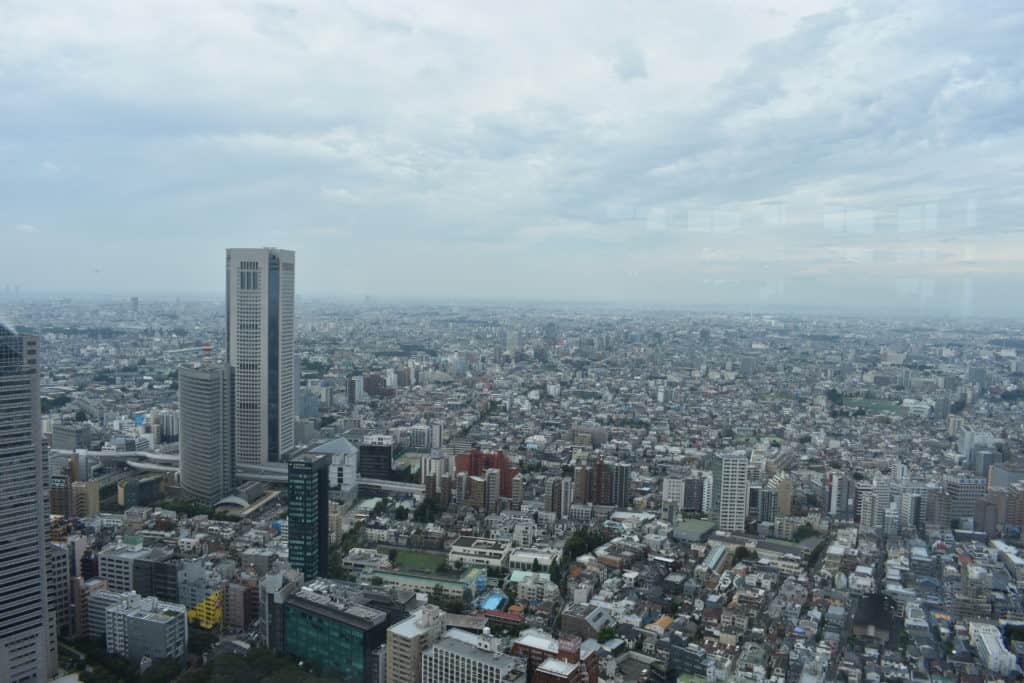
The administrative heart of Tokyo is located in Shinjuku, in the Metropolitan Government Buildings. They’re popular among travellers because of the free observation decks that offer breathtaking panoramic views of Tokyo. Although I wouldn’t recommend visiting these observation decks if you suffer from vertigo. Don’t say you weren’t warned.
Many people believe that the North tower is more interesting for travellers, because it’s open until later at night, making it a great spot for nightly panorama pictures or time-lapses.
Since it’s unlikely that you’ll come back to this building after witnessing it once, it’s a perfect experience for your first time in Tokyo.
So, as I mentioned, access to the observation decks is free of charge. The North Observatory is open from 9:30 am to 11 pm and the South Observatory is open from 9:30 am to 5:30 pm. Admission ends 30 minutes before closing time.
From Shibuya Station, take the JR Yamanote Line to Shinjuku Station.
From Tokyo Station, take the JR Chuo Line to Shinjuku Station.
When you arrive at Shinjuku Station, take the West Exit and follow the main road for about 10 minutes until you see two very similar tall buildings on your left hand side. Those two buildings are what you’re looking for.
Again, hear me out here.
Your first visit to Japan has to include a Japanese toilet experience. You might think toilets are nothing special, and justifiably so, but your first time in Tokyo will surprise you.
As can be expected from a highly technologically advanced country like Japan, these toilets have everything you could ever dream of in a toilet. (Just so we’re on the same page here, I’m not talking about Japanese squat toilets)
Toilets in Japan have features like a built-in bidet option – which is much more hygienic than toilet paper, by the way -, water pressure and temperature customisation, flushing sounds to help mask noises you don’t want other people to hear, heated seats, and much more.
I know this comes across like I’m obsessed with toilets, but you’ll understand after you’ve experienced it.
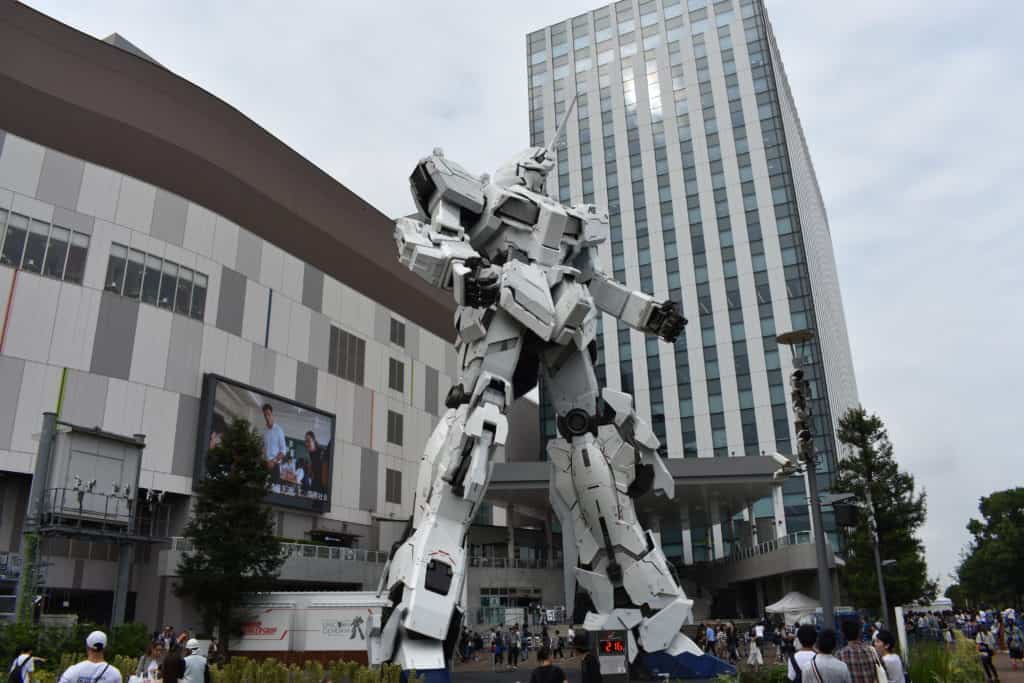
Odaiba is a large man-made island in Tokyo Bay, accessible from Tokyo by the Rainbow Bridge. It was originally founded as a military base in the 19th century, but it’s mostly known for its large shopping and entertainment districts nowadays.
The most important things to do and visit on Odaiba are the enormous Gundam statue (pictured above), the Rainbow Bridge and the replica of the Statue of Liberty. Other than that, you’ll want to spend some time in one of the many shopping malls on the island.
Odaiba is definitely worth an afternoon on your first visit to Tokyo.
Getting to Odaiba is a little trickier than getting to the other attractions covered in this article.
From Tokyo Station, Shibuya Station and Shinjuku Station, take the JR Yamanote Line to Osaki Station. In Osaki Station, purchase a ticket for the Rinkai Line (which is NOT covered by your JR Pass) and then take the Rinkai Line to Tokyo Teleport Station.
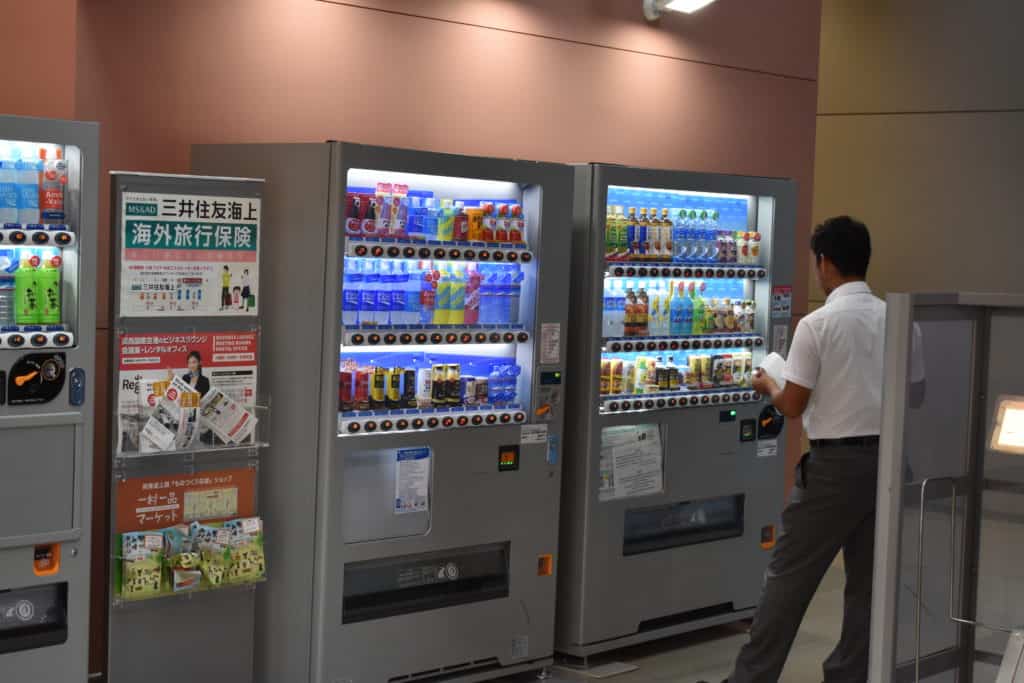
Vending machines of all kinds are not only popular in Tokyo, but throughout the entire country. To put this into perspective, Japan has one vending machine for every 23 inhabitants. That’s over 5 million vending machines spread throughout the country. Yes, really.
These machines can be found on every street corner and they usually sell refrigerated drinks (but some of them are known to sell some crazy things).
For visitors, these vending machines have almost become a tourist attraction, but for the locals, it’s mostly just a cheap, convenient way to get some well-needed refreshment.
For you, your first time in Tokyo is the perfect moment to experience the magic of these vending machines for yourself.
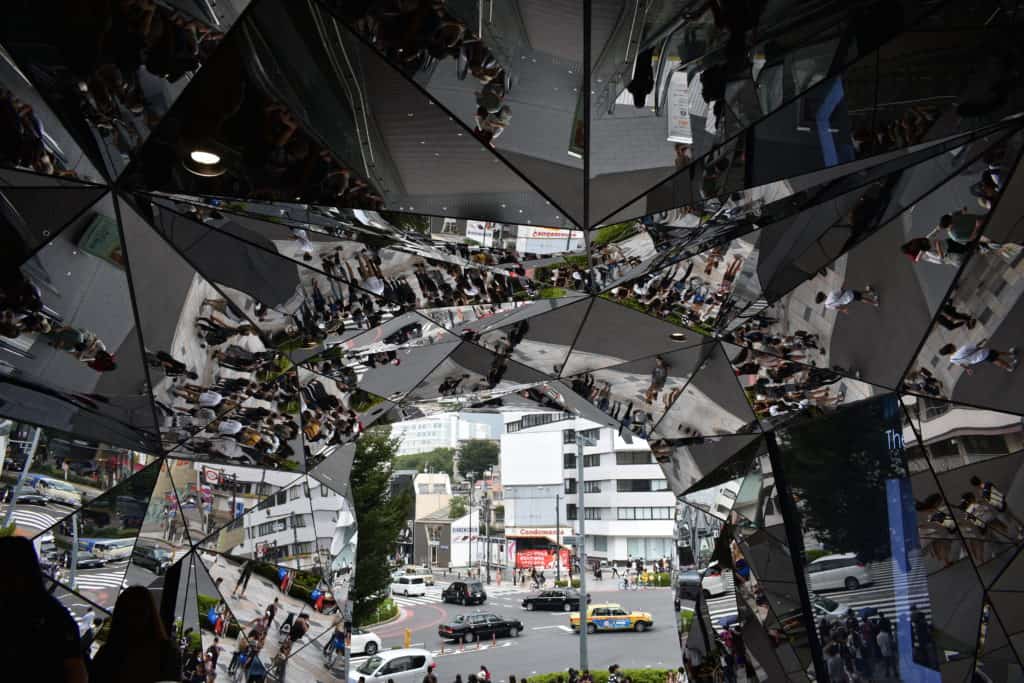
New York City has Fifth Avenue, Paris has the Champs-Élysees and London has Oxford Street. Tokyo has Omotesandō. This is Tokyo’s luxury shopping district that houses international brand boutiques and fashion flagship stores for brands like Dior, Gucci, Louis Vuitton and Yves Saint Laurent.
You can’t really not include a stroll along Omotesandō in your itinerary for your first time in Tokyo.
If you’re Irish, you have another reason to visit Omotesandō: it’s home to Tokyo’s annual Saint Patrick’s Day Parade. And even if you’re not Irish, it’s still a sight to behold.
Side note: if you’re looking for the place that’s pictured above, it’s called Tokyu Plaza Omotesando Harajuku. You and your Instagram feed are welcome.
From Tokyo Station, take the Maronouchi Line to Akasaka-Mitsuke Station. Transfer to the Ginza Line and get off at Omote-Sando Station.
From Shibuya Station, take the Ginza Line to Omote-Sando Station.
From Shinjuku Station, take the JR Yamanote Line to Shibuya Station and transfer to the Ginza Line to Omote-Sando Station.
Note: the Maronouchi Line and the Ginza Line are not covered by the JR Pass.
I mentioned Yoyogi Park earlier as the park that’s home to the Meiji Shrine. However, that’s not everything that one of the biggest parks of Tokyo has to offer.
During cherry blossom season (early April in most major central cities like Tokyo, Osaka and Kyoto), Yoyogi Park is the perfect place to sit down for a romantic picnic with your significant other or with your other travel companions.
However, cherry blossom season only lasts for about two weeks a year and there are fifty more weeks in which you can visit Tokyo for the first time. Should you be there in one of those fifty weeks and have some spare time on a Sunday, you might want to head to the Harajuku Entrance to Yoyogi Park.
This is where rockabilly dance crews gather every week to perform to music from the fifties. These dancers often look like they took a time machine to come to the twenty-first century, dressed in leather jackets and rocking slicked-back hairdos.
Keep in mind that there’s no fixed time for these performances, so you’ll have to be a bit lucky to witness them.
These dancers don’t do this to make money, but they’re just in it for entertainment. L’art pour l’art.
From Shibuya Station, Shinjuku Station and Tokyo Station, take the JR Yamanote Line to Harajuku Station and take the West Exit.
The infamous tuna auction of Tsukiji fish market is no longer to be found at Tsukiji. It moved to Toyosu Market, on one of the man-made islands in the harbour of Tokyo.
The fish market and tuna auction, now located at Toyosu, is pretty much what it says on the tin. In this building, you’ll find huge frozen tunas being auctioned off and fresh fish, seafood and sushi being prepared right before your eyes.
You can’t actually access the auction hall if you’re not planning on buying anything, but you can admire the fascinating tuna auction from a viewing platform up above.
If you don’t want to get up early during your first time in Tokyo, you should do it anyway. This fish market is worth it.
From Tokyo Station, take the JR Yamanote Line to Yurakucho Station and transfer to the Yurakucho Line. Get off at Toyosu Station and transfer again to the Yurikamome Line. Get off at Shijo-Mae Station.
From Shibuya Station, take the Hanzomon Line to Nagatacho Station and transfer to the Yurakucho Line. Get off at Toyosu Station and transfer again to the Yurikamome Line. Get off at Shijo-Mae Station.
From Shinjuku Station, take the Chuo-Sobu Line (Local) to Ichigaya Station and transfer to the Yurakucho Line. Get off at Toyosu Station and transfer again to the Yurikamome Line. Get off at Shijo-Mae Station.
Note: the Yurakucho, Yurikamome and Hanzomon Lines are subway lines and are NOT covered by the JR Pass.
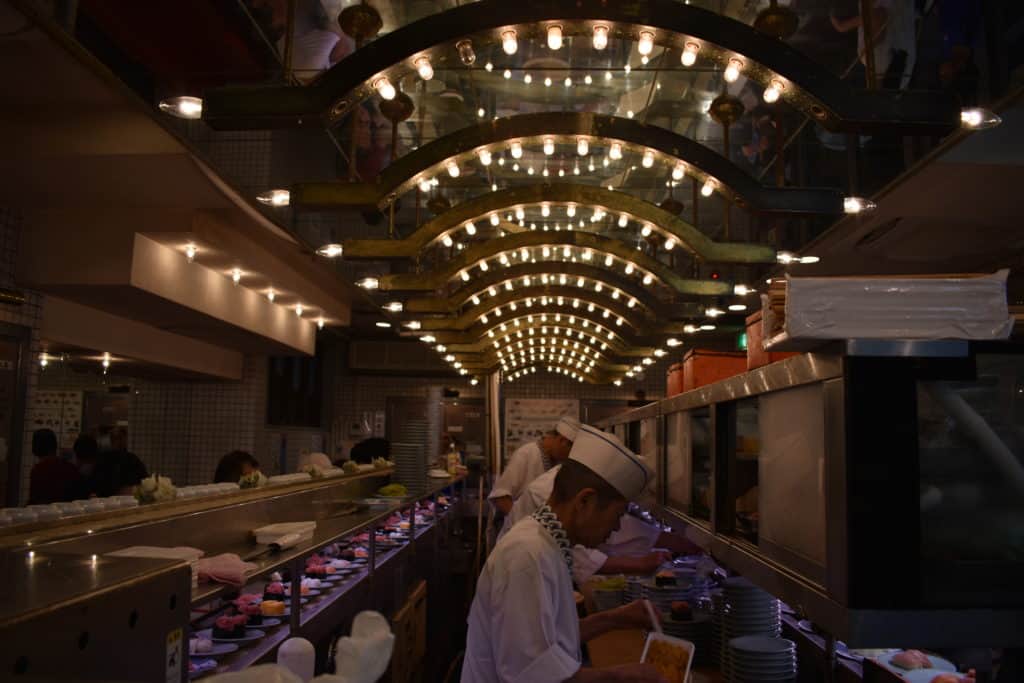
I’m still talking about food. I would apologise, but I’m not really sorry – after all, you’re trying to make your first time in Tokyo unforgettable, and Japanese food is an essential part of that experience.
In case you’re unaware, this is what a sushi belt is: there’s a rotating conveyor belt that transports sushi in a restaurant-like room, constructed around a central area where chefs are preparing fresh sushi and sashimi before your eyes. (As you can see in the video below)
The sushi you’ll eat in these establishments will be nothing like store-bought sushi you can buy at home – it’s as fresh as it gets and the taste is extraordinary.
Surprisingly, the price tag attached to this meal won’t set you back too much. Many sushi belt places have differently coloured plates that indicate sushi of different prices. You take the plates from the belt, eat the sushi and keep the plates. Then, when you’re about to pay for your food, a waiter counts your plates and calculates how much you have to pay.
These places give travellers like yourself an authentic view into life for the locals. And isn’t that what your first time in Tokyo should be about?
Now, you’ve got a great idea of how to rock a visit to the Japanese capital.
If you got through all these experiences on your first time in Tokyo, you’ve got a strong foundation in case you’re ever coming back to this city in the future and you need to show your friends around. You’ll be able to impress them with your knowledge of Tokyo and everyone will thank you.
And on that note, I’ll leave you.
Is there anything essential I missed in this list? Let me know in a comment!
Thank you for reading!
-S
PIN IT!
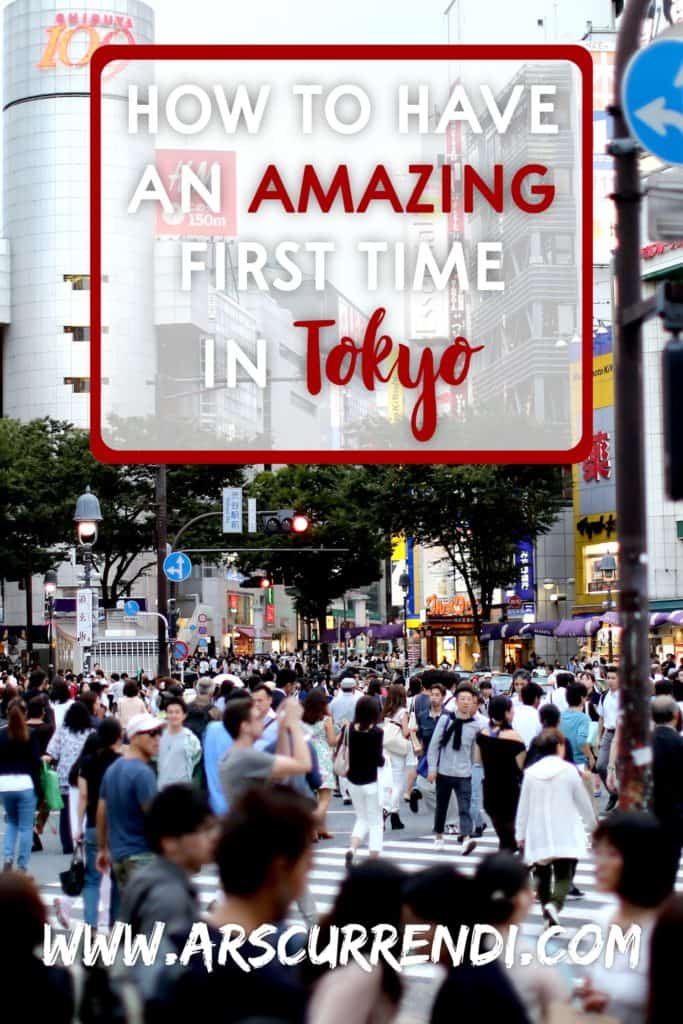
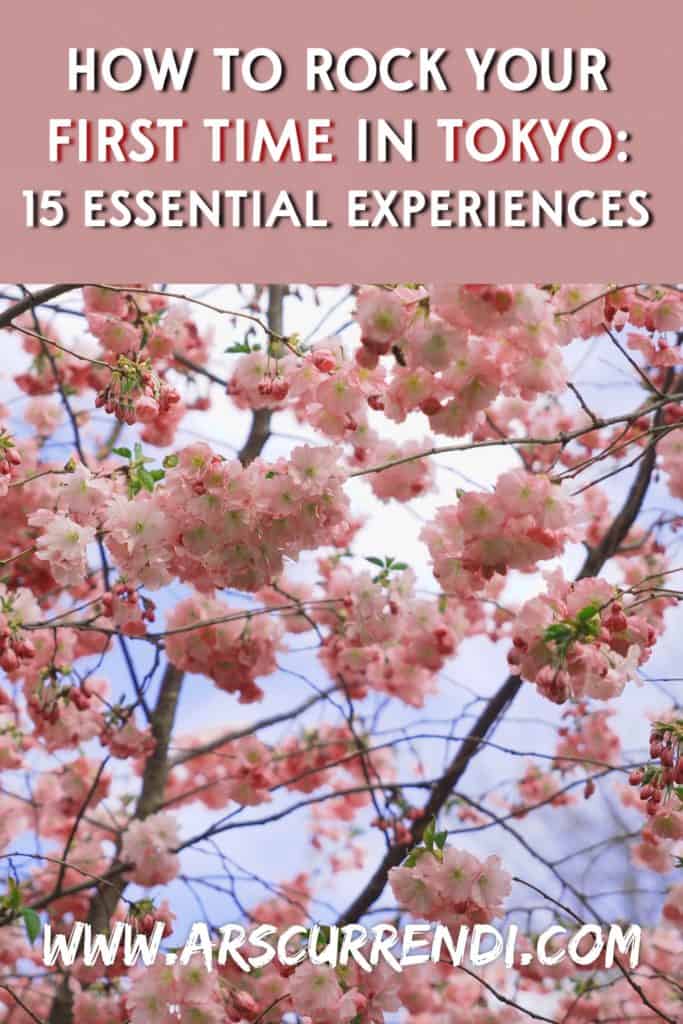
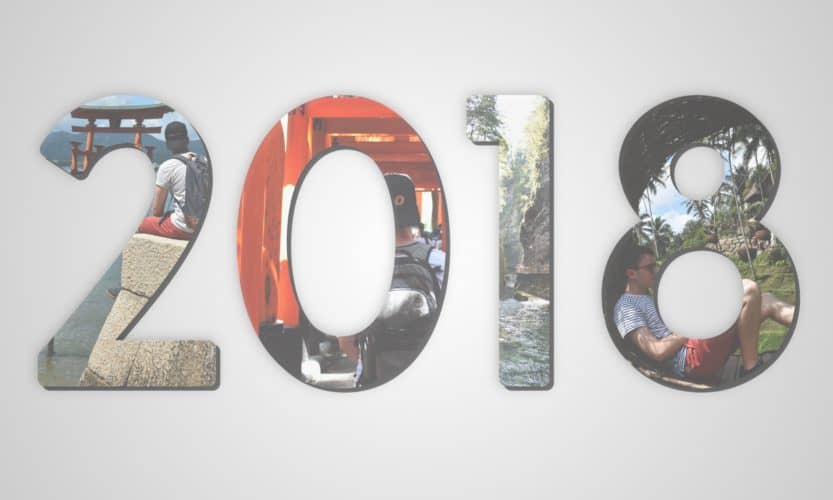
I’ve never done as much travelling in one year as I have in 2018. I travelled to three countries in Asia and four countries in Europe. Not only did I travel with friends and with family, I also travelled with a bunch of people I had never met before. This is a short overview of all the trips and crazy experiences I was fortunate enough to go through this year. This is my 2018 travel report.
Note: whenever I mention ‘blog posts/video coming soon’, it might already be up and I forgot to update this post. Check my recent blog posts and my YouTube channel to stay up to date with everything I do!
Click the links below to skip to the destinations you’re most interested in!
I’m not sure if everyone will count this as travelling, but I’m including it anyway. There’s nothing you can do to stop me.
In September 2017, I set off on my most ambitious project abroad to date. I spent four months studying abroad in Salamanca, Spain. Since I came back home in January 2018, I’m going to say it technically counts for my 2018 overview.
During my semester studying abroad, I met amazing people from all over the world (see Instagram picture below), I learned how to be independent and how to solve problems that I had never come across earlier. My Spanish also improved tremendously.
(The only reason I’m not on this picture is because it was taken the night before my first exam and I went home early to revise. See, Mom, I can be a responsible student.)
Studying abroad is usually something you do on your own. I was in a special situation, where I had a classmate who went on her Erasmus stay to the same city as me. We made friends together during the first few weeks, we were in class together and we studied together for our exams.
Big shout-out to Amy for helping me out with all kinds of problems I came across. <3
I went to Amsterdam in February.
One of the artists I had been following for a few years, Quinn XCII, was touring Europe in January and February 2018. When he dropped the announcement for the Europe leg of his The Story Of Us tour, I saw that the closest he would come to Belgium was Amsterdam. I messaged a few of my friends and one of them was willing to go to Amsterdam with me for a concert by an artist she had never heard of. What an absolute legend.
I combined this show with a visit to my sister, who was studying abroad in Amsterdam at the time. She was in the middle of her exams and we met up a few times to go for dinner and to explore the city.
In total, we ended up staying in Amsterdam for three days. We didn’t really visit any popular tourist hotspots, since my friend and I had both been in Amsterdam before (on the same school trip, by the way) and my sister obviously didn’t need to visit them anymore after having spent a few months there.
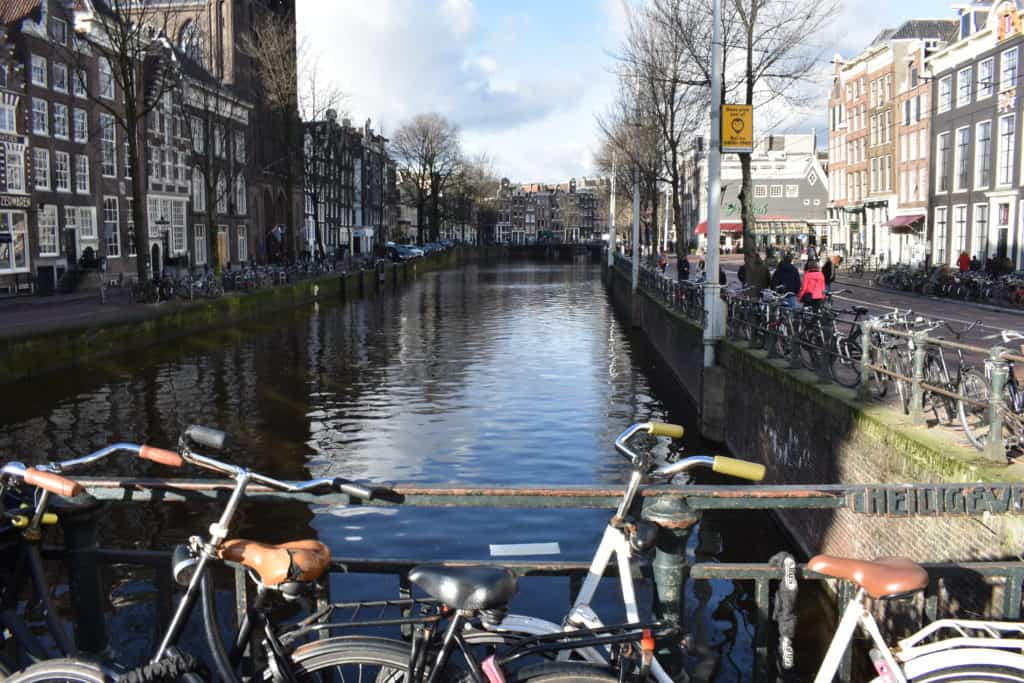
As I mentioned before, I went to Amsterdam with one of my best friends from high school and we met up with my sister a few times once we were there.
I went to La Plagne in February.
As I mentioned in my travel story, yearly ski trips have been an essential part of our family bonding since I was four years old. Before 2018, we hadn’t gone skiing for a while, but this year we went to La Plagne for a week of fun plowing through the snow.
We skied a lot. I reached a top speed of over 90 km/h (55 mph) rushing down a slope with nothing but two long sticks attached to my feet. I believe everyone should go skiing at some point, but that’s not the question here.
Also: I ate a lot of food. Just thought I’d throw that out there.
I went skiing in La Plagne with my parents and my sister, and we met up with a friend of my sister’s who was there with her family at the same time by chance.
I went to Lille in May.
After I came back from my four-month stay in Spain, I realised how much fun it was to be in an international organisation of exchange students and Erasmus students. While I was in Spain, I went on many trips that were organised by the local office of ESN (Erasmus Student Network).
Many of these trips can be seen in my Travel Videos playlist!
And so, when I was back in Belgium, I wanted to return the favour to the international student community. I contacted ESN Ghent (the city I’m currently studying in) to see if there was anything I could do for them, and it turns out there was. We agreed that I would join an upcoming ESN trip to Lille and take care of the pictures and video.
No sooner said than done, I found myself filming an international group of students I had never met before in a French city.
I went to Lille with two guys who volunteered at ESN Ghent and a group of 30-something international students who were out to explore the best Lille had to offer.
I went to Japan in August.
It’s been almost four months since I came back from Japan, but it still feels surreal to me that I actually went there and it was not a dream.
I spent two weeks in Japan and I visited Osaka, Tokyo, Kyoto, Nara, Hiroshima, Itsukushima, Hakone, Shirakawa-go and Kanazawa. (More blog posts about Japan coming soon, by the way)
It was action-filled, ridiculous, exceptional, adventurous, unbelievable.
I can’t wait to go back and explore more of this crazy, crazy country.
I went to Japan with my parents and my sister. We also met up with a few people my dad knew from work when we were there.
I went to Bali in September.
After our two-week trip to Japan, my sister and I were still feeling energetic and ready for another trip. So we went to Bali for a week.
Admittedly, we had booked all this in advance, so it wasn’t a spur-of-the-moment kind of deal.
While we were in Bali, we visited Ubud (Monkey Forest, rice terraces and Bali Swings), Canggu and Nusa Penida (Kelingking Beach, Broken Beach & Angel’s Billabong). We also ate. A lot. And we got a few massages. #thegoodlife
Bali might be on your bucket list, but you might want to revisit that. Here’s why Bali may or may not be worth a visit.
I went to Bali with my sister.
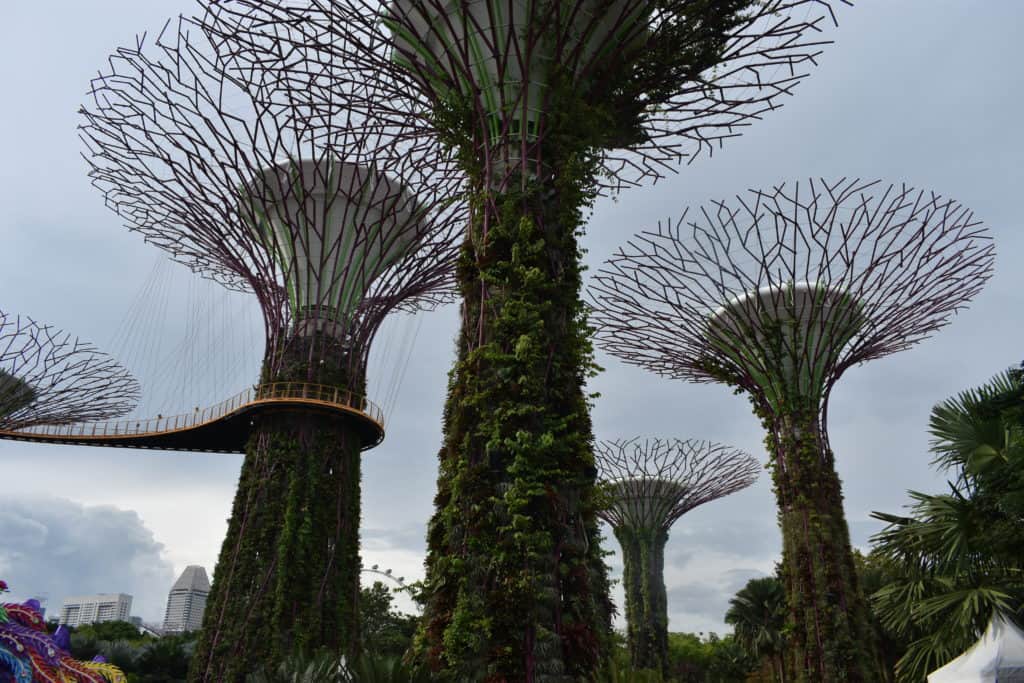
I went to Singapore in September.
Since I was only in Singapore for a 30-hour layover, I didn’t do a whole lot.
In our short available time period, we managed to check out the Supertree Grove at Gardens By The Bay (during the day AND at night), the Flower Dome, Cloud Forest, Little India and Chinatown.
We also admired a light show at the Supertree Grove (called the Garden Rhapsody) and one at the Marina waterfront. We experienced both shows within about half an hour of each other and it was the perfect end to a perfect trip.
Blog posts and video coming soon.
I went to Singapore with my sister, after our visits to Japan and Bali.
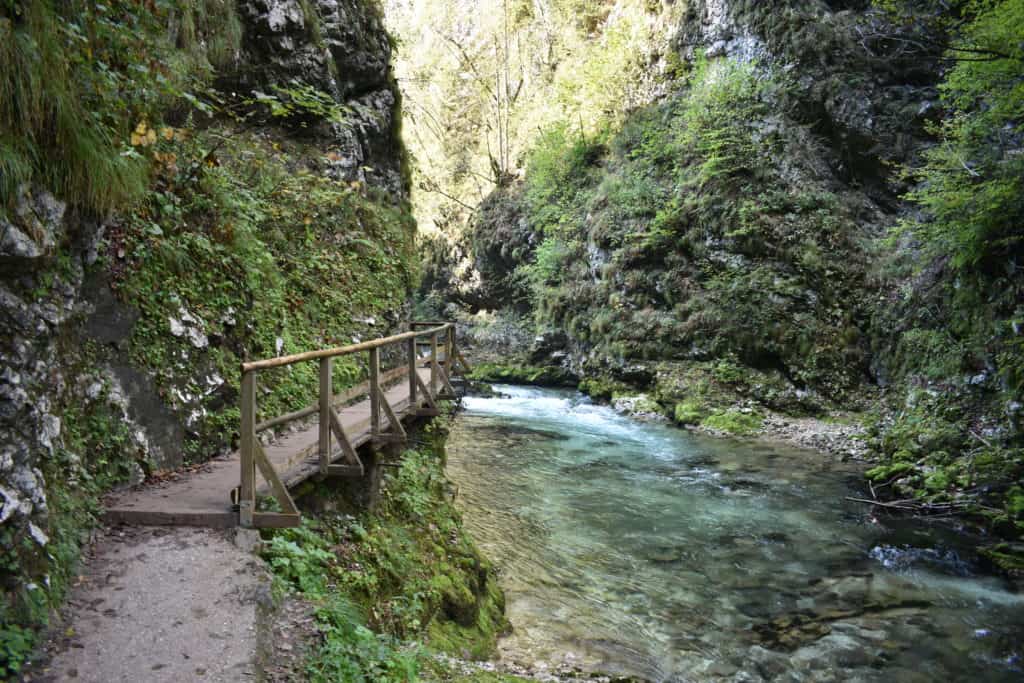
I went to Slovenia in September.
We arrived in Ljubljana, where we stayed for two days and mostly wandered around its quaint streets and neighbourhoods and discovering everything the Slovenian capital had to offer. Some recommendations: a stroll along the Ljubljanica river, Dragon Bridge, Preseren Square and Ljubljana Castle.
After two days in the capital, we took a bus to Bled, where we stayed in an Airbnb located at about ten minutes of Lake Bled. Also, I accidentally walked all the way around the lake on our last day. But that’s a story for later.
Related: get €30 off your first Airbnb booking here.
From Bled, we also went on a day trip to Vintgar Gorge. It was extremely tiring since the hike up there took us a lot longer than we had anticipated, but it was totally worth it. The views were gorge-ous. (I’m so sorry.)
Blog posts and video coming soon.
I went to Slovenia with one of my best friends from school (who is also an avid world traveller and one of the biggest fans of this blog, by the way).
This 2018 travel report wasn’t just meant to make anyone reading this jealous of how much I travelled. It was meant to show you that anyone can travel. If I, a full-time university student, can go on seven trips in one year, there’s no reason for you not to be able to do the same thing.
I’m not rich. I don’t have more time than you do. But I do make travel a priority.
As a travel blogger, writing a travel report like this is like a photographer making a photo album. In the future, I’ll be able to look back at this post and relive everything I experienced in 2018.
All I’m trying to say here is that it doesn’t always have to be a big, fancy trip. You can go to a city one hour away from your hometown and discover things you had never seen before.
Travelling is not about collecting trophies from the most extreme destinations across the world. It’s about experiencing life and living your dreams.
Here’s to travelling more than you think you can in 2019. Let’s make this the best year of our lives.

If you’ve ever looked for information on cheap travel online, you know who Nomadic Matt is. Even though you might not realise it, you have definitely looked at one of his articles while you were planning a trip. Well, I got the opportunity to interview travel blogging titan Nomadic Matt about his life as a full-time traveller.
I asked Matt a number of questions about his lifestyle as a digital nomad and a travel expert.
Without any further ado, here’s the story of Matthew Kepnes, also known as Nomadic Matt.

Hey everyone! My name is Nomadic Matt and I run the budget travel website nomadicmatt.com. In a nutshell, my job is to help people travel better, cheaper, and longer. But before I became ‘Nomadic’ Matt I was just regular Matt. I went to college, worked in a cubicle, and lived a pretty typical life in Boston. But like many people, I felt like there was more out there; I felt like something was missing. There has to be more to life than just working a 9-5 grind, right?
After going on a trip to Costa Rica for a couple weeks, I wanted to travel more. I had officially caught the travel bug! I eventually planned another trip which brought me to Thailand. It was there that I met some backpackers — full-time travelers — and had my eyes opened. As soon as I got back home I knew I had to find a way to travel more.
So, I worked a ton of overtime, saved up all my money, and eventually quit my job to travel the world. Along the way, I started teaching English overseas and eventually started a travel blog to share my travel stories with people back home. Over the past decade, Nomadic Matt has grown from a simple travel journal to a comprehensive budget travel resource that helps millions of people every month. It certainly wasn’t an easy journey, but it’s been an incredible opportunity. One that I’m grateful for everyday!
For my first trip, I was just looking to go somewhere warm, interesting, and somewhere relatively safe. I was looking to take a break from things and go on vacation, but I didn’t want to just spend my time sitting on the beach at some resort. I wanted to do something more adventurous, but I wasn’t quite ready for solo travel — heck, I don’t think solo travel even crossed my mind! After doing some research, I decided to travel to Costa Rica on a tour. That way, I would be able to get off the beaten path but without having to worry about all the logistics. It was my first real trip abroad, after all, so going on a tour was a great way for me to test the waters and experience travel beyond the typical resort vacation.
Backpacking in Costa Rica really opened my eyes to the world of travel. Seeing and experiencing a different culture with my own eyes, meeting locals, and disconnecting from regular everyday life did wonders for me. I had an amazing experience, and as soon as I got home I was already thinking about my next trip. The only question was, “Where should I go next?”
To be honest, I never ever knew long-term/full-time travel was a thing until I went to Thailand. I think like most people, travel to me was just something you did for a vacation; it was a chance to get away and relax, not an entire lifestyle. Meeting those backpackers when I was traveling in Thailand really opened my eyes to the possibilities out there. You didn’t need to work the 9-5 to get by. There were countless opportunities out there for anyone willing to break free of the norm and seize them. Working holidays, teaching English abroad, volunteering overseas — the sky was the limit!
Looking back, it was backpacking in Thailand that was really the catalyst for everything. Who knows, if I never met those backpackers in Thailand there might not have been a Nomadic Matt!

It wasn’t until after starting a blog that I was making a living from my website. Initially, the blog was just a hobby; it was a way for me to showcase my writing so I could (hopefully) get a job as a travel writer for Lonely Planet. I had been teaching English in Asia for a while, which supplied me with most of my income when I was just starting out. I also sold some links to supplement my income (that was a common practice back in the day, but it’s long-since abandoned as Google has cracked down on that sort of thing).
Once I started to see that my blog was actually getting traffic, I decided to focus on it full-time. But even then, it still took me a couple of years before I was able to make a living from it. Making money online is the dream, but it’s not as easy as it looks! Sponsorships and ads will only take you so far, so if you really want financial independence you will need to make your own product or sell a service. That is what will set you apart from the crowd and get you on the road to financial freedom.
A lot of people think that starting a travel blog is easy and that it’s a great way to get rich quick — both of which are not true! But if you’re willing to put in the work and learn what it takes to succeed, there’s a good chance you’ll be able to build a successful business and eventually make a living from your own blog too.
Social media definitely paints a picture that working online is easy and hassle free but that is hardly the case. Working remotely usually means long hours sitting at your laptop, it means always hunting for Wi-Fi and putting in a lot of hours to make sure you’re not falling behind. Anyone promoting pictures of laptops by the pool or at the beach is likely just doing that to entice you to buy something because that isn’t the reality!
Working online can make it really hard to find that work/life balance, since there aren’t as many clear-cut divides between your work life and your personal life. It’s very easy to overwork and always be stressing about your next project or initiative. Or conversely, it can be really easy to slack off and not get anything done because you’re your own boss — no one is there to get you in trouble if you just relax on the beach all day!
So you’ll want to make sure you make a conscious effort to develop a solid work/life balance so that you can avoid the major pitfalls that most remote workers fall into. Because if you can do that, then this lifestyle has a lot of benefits that you’ll be able to enjoy!
To help me stay on track, these days when I travel I usually don’t work. Sure, I’ll answer emails and maybe tinker with some smaller tasks, but for the most part I leave my laptop alone. I find this lets me focus more on the destination, allowing me to soak it all in and relax more. That way, when I get home I can focus on writing better content because I was actually able to immerse myself in the destination, meet locals, and get a much better sense of the destination. It really helps me find a better work/life balance and gives me a chance to disconnect, which I think is vital in this day and age.

After traveling for years, it just felt like it was time to settle down a little bit. Constantly moving around can be exhausting — especially if you’re trying to also run a business. I felt like I needed to spend some time really focusing on my website, which was just too difficult to do when I was constantly bouncing around. Settling down gave me the time to make tons of improvements to the website, launch new content and initiatives, hire staff to help me manage things, and grow the website like I had never done before. So, while I wanted to slow my travels down it was also a smart business decision.
As for why I picked New York, that’s simply because I think it’s one of the best cities in the world! I’m a city person at heart, with my favorite destinations being places like London, Bangkok, Hong Kong, and Stockholm. And when it comes to cities, few places can compete with the Big Apple. It has everything you need no matter what your interests are, offering amazing museums and attractions, a wild nightlife, amazing food, and everything in between. Even if you’re not a city person, I think everyone should visit New York City at one point in their lives, just to see the city for themselves. Because if you ask me, I think it’s one of the best places in the world!
I think slow travel is the best way to travel. At the end of the day, it comes down to quality over quantity. I know it can be tempting to see as much as you can as fast as you can (especially if you don’t get a lot of vacation time) but it will all just end up a blur if you rush around too quickly. You’ll spend more time on trains and buses than in the actual places you want to visit! I think many travelers — including myself — learn this lesson the hard way.
For that reason, I always encourage people to slow down. Stop and smell the roses. Soak in the destination. Get under its skin. Not only will you learn more, but you’ll open yourself up to more spontaneous experiences and be more likely to meet locals. Don’t waste your vacation by zipping around to a new city every other day. Slow down. Focus on quality. I promise you won’t regret it!
I think my days of full-time travel have come to an end. Then again, every time I say I’m going to travel less I never really do so what do I know! I just booked a trip to South America! So while I doubt I’ll ever go back to full-time travel, I think travel will always be a big part of my life. Because even when I say I’m going to stay home I always end up booking a flight somewhere. Once the travel bug bite, it’s hard to resist for long!

I think anyone can learn the skills to be a successful digital nomad or remote worker, but whether or not it’s the lifestyle for you will depend on your personality. Are you self-disciplined and self-motivated? Can you create deadlines and stick to them or do you need someone to tell you what to do? Do you mind working long hours for little money — or no money — when you’re just starting out? How are you when it comes to teaching yourself new skills, including tech skills?
Starting a blog is the same as starting a business. You need to have what it takes to plan, to prepare, and to stick with it no matter what. It’s a tedious, risky process that isn’t guaranteed to succeed. But, if you can pull it off you’ll be rewarded with the freedom to explore the world on your own terms. And if you ask me, that is more than worth the price.
A huge thank you to Matt for taking the time to answer my questions and for letting us know what it’s like to be one of the biggest travel bloggers in the world. You can follow Nomadic Matt on his blog, Facebook, Instagram, Twitter and Pinterest.

Our next guest for Free Spirits Friday is Daniela. I met Daniela in a Facebook group for travel bloggers and we’ve been sharing tips and tricks with each other ever since. Daniela was born in Germany but she moved to Peru in 2017, where she’s now still based. She’s the genius behind her travel blog, Digital Nomads Peru, where she shares tips on how to move to Peru and what to do there.




Design by NXNW.